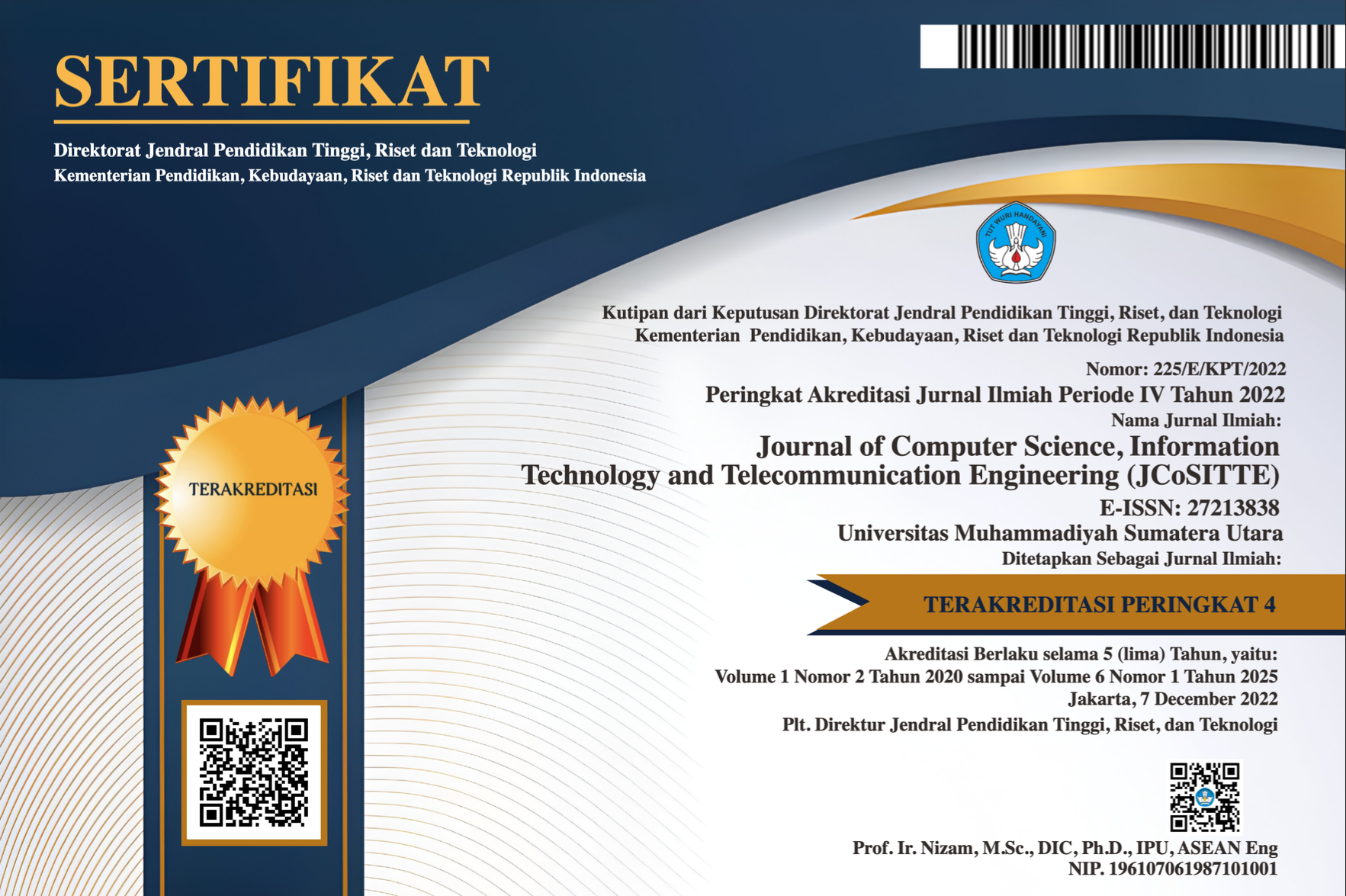Successful Applications Analysis System at PT. Carefastindo Sumbagut Region Using Structural Equation Model
Abstract
Keywords
Full Text:
PDFReferences
Dehghan, A., Mehrabi, A., & Fotouhi, N. (2013, May). The necessity of establishing business intelligence competency centers for achievement of BI projects. In The 5th Conference on Information and Knowledge Technology (pp. 242-247). IEEE.
Hadidi, M. A. M. O. U. N., Al-Rashadan, M. A. E. N., Hadidi, S., & Soubhi, Y. (2020). Comparison between Cloud ERP and Traditional ERP. Journal of Critical Reviews, 7(3), 140-142.
Jayawickrama, U., Liu, S., & Smith, M. H. (2016). Empirical evidence of an integrative knowledge competence framework for ERP systems implementation in UK industries. Computers in Industry, 82, 205-223.
Kleis, L., Chwelos, P., Ramirez, R. V., & Cockburn, I. (2012). Information technology and intangible output: The impact of IT investment on innovation productivity. Information Systems Research, 23(1), 42-59.
Mohamad, M. M., Sulaiman, N. L., Sern, L. C., & Salleh, K. M. (2015). Measuring the validity and reliability of research instruments. Procedia-Social and Behavioral Sciences, 204, 164-171.
Purohit, G. N., Jaiswal, M. P., & Pandey, S. (2012). Challenges involved in implementation of ERP on demand solution: Cloud computing. International Journal of Computer Science Issues (IJCSI), 9(4), 481.
Suhaimi, N. S. A., Nawawi, A., & Salin, A. S. A. P. (2017). Determinants and problems of successful ERP implementations-Malaysian experience. International Journal of Advanced Operations Management, 9(3), 207-223.
Tanjung, V. N., Saputra, M., & Puspitasari, W. (2020). Analysis of Assessment Cycle of Migration Data from OROS to SAP Hana using Activity based Costing Method in Telecommunication Industry.
Tiwana, A. (2013). Platform ecosystems: Aligning architecture, governance, and strategy. Newnes.
Wu, Y. U. N., Cegielski, C. G., Hazen, B. T., & Hall, D. J. (2013). Cloud computing in support of supply chain information system infrastructure: understanding when to go to the cloud. Journal of Supply Chain Management, 49(3), 25-41.
DOI: https://doi.org/10.30596/jcositte.v2i2.7859
Refbacks
- There are currently no refbacks.





.png)

